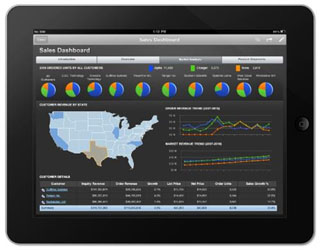5 Trends to Change Our Lives in the Next 5 Years
Tech company IBM has unveiled its fifth annual “Next Five in Five” — a list of innovations that have the potential to change the way people work, live and play over the next five years.
The observations, according to IBM, are based on market and societal trends expected to transform our lives, as well as emerging technologies from IBM’s Labs that can make these innovations possible.
In the next five years, IBM believes, technology innovations will change people’s lives in the following ways:
3-D Interactions
In the next five years, 3-D interfaces – like those in the movies – will let you interact with 3-D holograms of your friends in real time. Movies and TVs are already moving to 3-D, and as 3-D and holographic cameras get more sophisticated and miniaturized to fit into cell phones, you will be able to interact with photos, browse the Web and chat with your friends in entirely new ways.
[ Also Read: Intel Chips in to Make Football Helmets Safer ]Batteries
Ever wish you could make your laptop battery last all day without needing a charge? Or what about a cell phone that powers up by being carried in your pocket?
In the next five years, scientific advances in transistors and battery technology will allow your devices to last about 10 times longer than they do today. And better yet, in some cases, batteries may disappear altogether in smaller devices.
Instead of the heavy lithium-ion batteries used today, scientists are working on batteries that use the air we breath to react with energy-dense metal, eliminating a key inhibitor to longer lasting batteries. If successful, the result will be a lightweight, powerful and rechargeable battery capable of powering everything from electric cars to consumer devices.
[ Also Read: Watch Out HP, Oracle; IBM is Stealing Your Clients ]Citizen Scientists
In five years, sensors in your phone, your car, your wallet and even your tweets will collect data that will give scientists a real-time picture of your environment. You’ll be able to contribute this data to fight global warming, save endangered species or track invasive plants or animals that threaten ecosystems around the world. In the next five years, a whole class of “citizen scientists” will emerge, using simple sensors that already exist to create massive data sets for research.
Simple observations such as when the first thaw occurs in your town, when the mosquitoes first appear, if there’s no water running where a stream should be – all this is valuable data that scientists don’t have in large sets today. Even your laptop can be used as a sensor to detect seismic activity. If properly employed and connected to a network of other computers, your laptop can help map out the aftermath of an earthquake quickly, speeding up the work of emergency responders and potentially saving lives.
[ Also Read: Bayer Workers Get Social with IBM Software ]Personalized Commuting
Imagine your commute with no jam-packed highways, no crowded subways, no construction delays and not having to worry about being late for work. In the next five years, IBM says, advanced analytics technologies will provide personalized recommendations that get commuters where they need to go in the fastest time.
Adaptive traffic systems will intuitively learn traveler patterns and behavior to provide more dynamic travel safety and route information to travelers than is available today.
[ Also Read: Nokia Calling Africa with Ovi Life Tools ]Recycled Energy
Innovations in computers and data centers are enabling the excessive heat and energy that they give off to do things like heat buildings in the winter and power air conditioning in the summer. Can you imagine if the energy poured into the world’s data centers could in turn be recycled for a city’s use?
Up to 50 percent of the energy consumed by a modern data center goes toward air cooling. Most of the heat is then wasted because it is just dumped into the atmosphere. With new technologies, such as novel on-chip water-cooling systems developed by IBM, the thermal energy from a cluster of computer processors can be efficiently recycled to provide hot water for an office or houses.
IBM released its “Next Five in Five” list today, Dec. 29.
Photo courtesy: IBM




